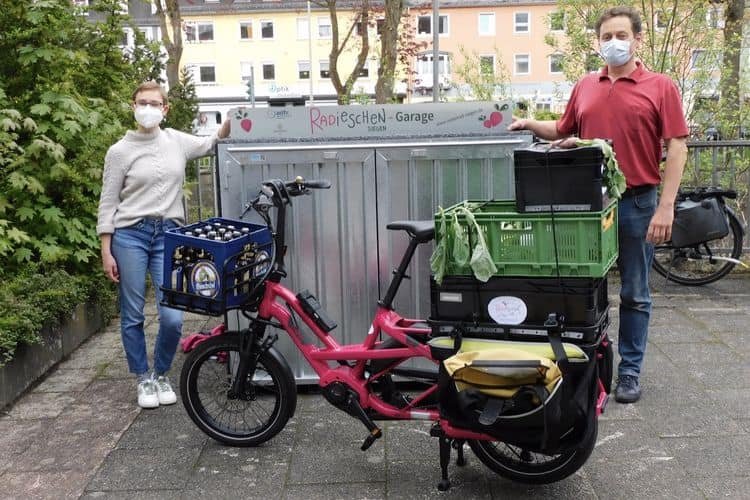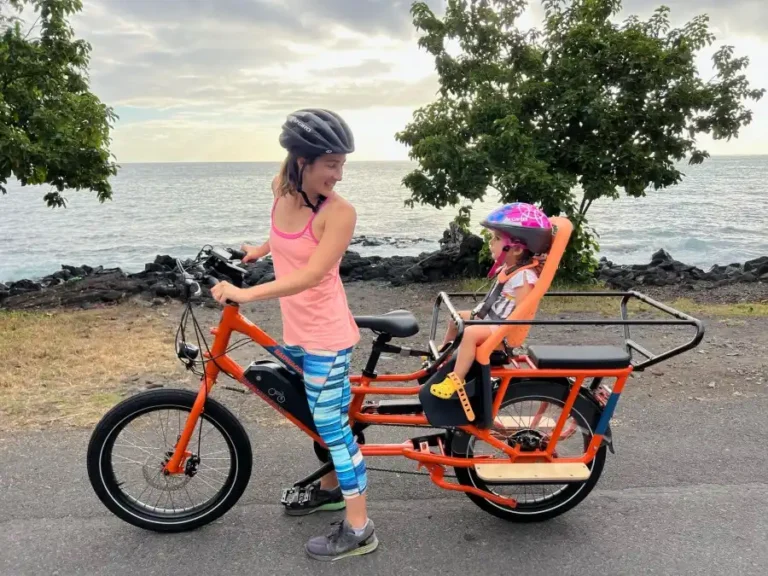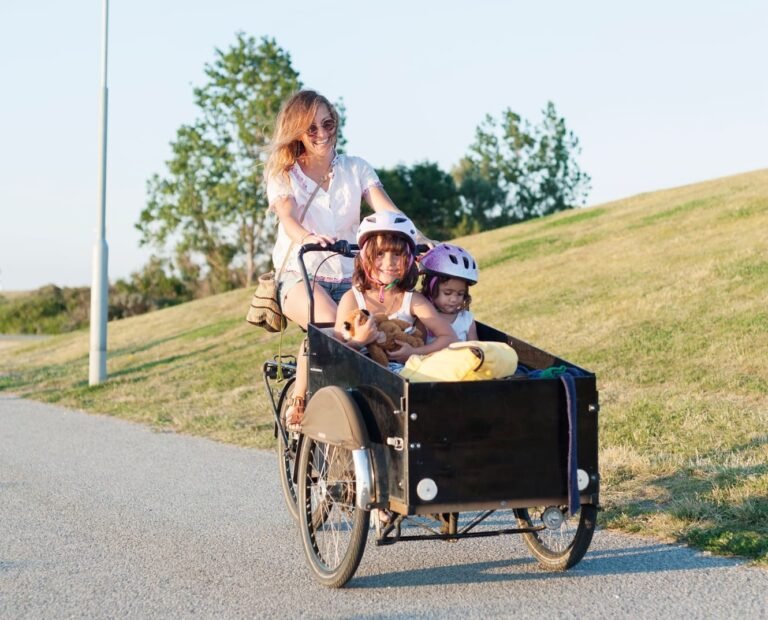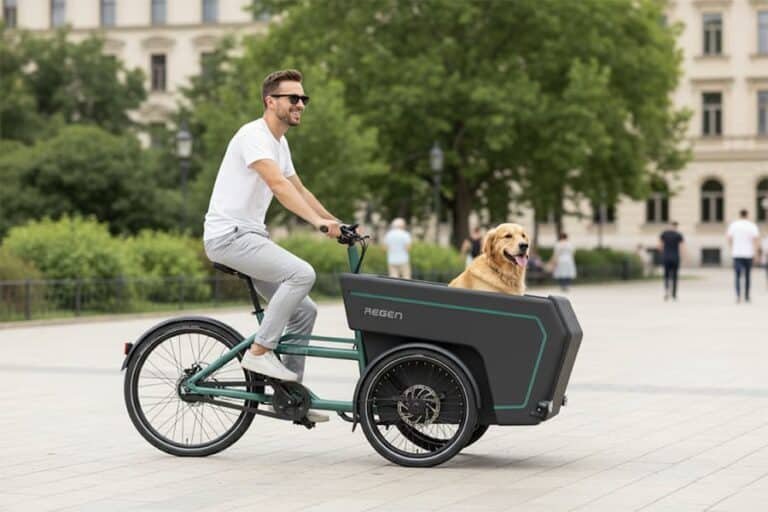Understanding motor torque is essential for choosing the right e-bike or cargo e-bike, especially if you’re transporting goods, riding in hilly areas, or aiming for smooth acceleration. Whether you’re a commuter, a business operator, or simply exploring cargo bike options, this in-depth FAQ addresses the most common—and most important—questions about torque: how it works, how much you need, and how to match it with your daily demands.
We’ve gathered the top 20 user-searched questions on motor torque and answered each with detailed, practical explanations. From comparing hub and mid-drive motors, to evaluating whether 40Nm is enough for urban deliveries, this guide breaks it all down clearly. You’ll also find references to trusted sources like Bosch, Bafang, and real-world reviews, plus helpful visuals to make it easier to understand.
At Regen, we support both newcomers and industry professionals in finding tailored cargo e-bike solutions. If you’re still unsure about torque, our engineering and industrial design teams offer free consultations to help you decide—whether by video call, phone, or email.
1. What is motor torque in an e-bike, and why does it matter?
Motor torque, measured in Newton-meters (Nm), represents the rotational force the motor applies to propel the bike forward. In e-bikes, higher torque translates to better acceleration, improved hill-climbing ability, and enhanced performance under load. It’s particularly crucial for cargo e-bikes, which often carry heavy loads and require sufficient torque to maintain performance.
Understanding torque is essential because it directly affects the bike’s responsiveness and efficiency. For instance, a motor with 85 Nm of torque will handle inclines and heavy cargo more effectively than one with 40 Nm. Therefore, assessing your typical riding conditions and load requirements is vital when considering torque specifications.
Reference: Bosch eBike Systems
2. How much torque do I need for a cargo e-bike?
The required torque for a cargo e-bike depends on factors like load weight, terrain, and desired speed. Generally, for flat urban environments with moderate loads, a motor with 60–70 Nm of torque suffices. However, for hilly terrains or heavier cargo, motors offering 85 Nm or more are recommended to ensure smooth and efficient rides.
For example, the Bosch Cargo Line motor provides up to 85 Nm of torque, making it suitable for demanding cargo applications. Assessing your specific needs and consulting with experts can help determine the optimal torque for your use case.
3. What is the difference between torque and power (watts) in an e-bike motor?
Torque and power, while related, describe different aspects of motor performance. Torque (Nm) measures the rotational force, influencing acceleration and hill-climbing ability. Power (watts) indicates the rate at which work is done, affecting the bike’s top speed and overall performance.
In practical terms, high torque ensures strong starts and effective climbing, while higher wattage allows for maintaining higher speeds. Balancing both is crucial; a motor with high torque but low power may climb well but lack speed, whereas high power with low torque may struggle on inclines.
Reference: Electroheads
4. Is higher torque always better for carrying loads or climbing hills?
While higher torque improves load-carrying and climbing capabilities, it’s not always the optimal choice for every rider. Excessive torque can lead to increased battery consumption and may not be necessary for flat terrains or lighter loads. Therefore, selecting a motor with torque appropriate to your typical riding conditions is more beneficial.
For instance, urban commuters with minimal cargo may find 50–60 Nm sufficient, while those in hilly areas or transporting heavy goods might require 85 Nm or more. Evaluating your specific needs ensures efficiency and prolongs battery life.
Reference: Windone
5. What torque rating is good for steep inclines or hilly terrain?
For steep inclines or hilly terrains, a motor with at least 70–85 Nm of torque is advisable. This range provides sufficient power to tackle gradients without overexerting the rider or the motor. In extremely steep areas, motors offering up to 160 Nm, like the Bafang M620, may be necessary.
Choosing the right torque ensures a comfortable ride and prevents strain on the motor, enhancing the bike’s longevity and performance in challenging conditions.
Reference: Bafang M620/G510 Ultra Motor Kit
6. Which motor has more torque – mid-drive or hub motor?
Mid-drive motors typically offer higher torque compared to hub motors. They leverage the bike’s gear system, providing better performance on inclines and under load. Hub motors, while simpler and often more affordable, may struggle with steep hills or heavy cargo due to lower torque output.
For example, mid-drive motors like the Bosch Cargo Line deliver up to 85 Nm of torque, whereas many hub motors offer around 40–60 Nm. Therefore, for demanding applications, mid-drive motors are generally preferred.
Reference: Van Raam
7. What’s the ideal torque for family e-cargo bikes vs commercial delivery bikes?
Family e-cargo bikes, often used for transporting children or groceries, typically require motors with 60–85 Nm of torque. This range ensures smooth rides and sufficient power for moderate loads. Commercial delivery bikes, handling heavier and more frequent loads, benefit from higher torque motors, such as the Bafang M620 with up to 160 Nm.
Selecting the appropriate torque based on usage ensures efficiency, safety, and longevity of the e-bike, catering to the specific demands of family or commercial applications.
Reference: Bafang M620/G510 Ultra Motor Kit
8. How to ensure the motor torque of a cargo e-bike suits my needs?
Assessing your typical load weight, terrain, and riding frequency is crucial in determining the appropriate motor torque. For flat terrains with light loads, 50–60 Nm may suffice, while hilly areas or heavier cargo might necessitate 85 Nm or more. Test rides and consultations with experts can provide valuable insights.
At Regen, our engineering and industrial design teams are dedicated to helping you find the perfect fit. We offer free consultations via video, phone, or email to discuss your specific requirements and recommend suitable e-bike options. Our goal is to ensure your cargo e-bike delivers optimal performance tailored to your needs.
Contact us at Regen for personalized assistance.
9. How does torque impact acceleration when the bike is fully loaded?
Higher torque directly enhances acceleration, especially when the e-bike is fully loaded. It allows the motor to provide sufficient force to overcome inertia, ensuring smooth starts and responsive performance. This is particularly important in stop-and-go urban environments or when navigating inclines with heavy cargo.
Insufficient torque under load can lead to sluggish acceleration, increased strain on the motor, and reduced overall efficiency. Therefore, selecting a motor with adequate torque is essential for maintaining performance and safety when carrying substantial loads.
Reference: Electroheads
10. Is 40 Nm of torque enough for urban commuting with light cargo?
For flat urban commuting with minimal cargo, 40 Nm of torque can be sufficient. It provides adequate assistance for smooth rides and moderate acceleration. However, if your route includes hills or you frequently carry heavier loads, opting for a motor with 50–60 Nm or more is advisable.
Choosing the right torque ensures a comfortable and efficient commute, reducing strain on both the rider and the motor, and enhancing the overall riding experience.
Reference: Windone
11. What’s the difference between peak torque and continuous torque?
Peak torque refers to the maximum torque a motor can deliver for short bursts, such as during acceleration or climbing steep hills. Continuous torque is the torque the motor can sustain over extended periods without overheating or degrading performance.
Understanding both values is important; while high peak torque ensures strong performance in demanding situations, adequate continuous torque is essential for maintaining consistent power during prolonged use.
Reference: Bosch eBike Systems
12. Does higher torque drain the battery faster?
Higher torque can lead to increased battery consumption, especially during frequent acceleration or climbing. However, modern e-bike systems are designed to balance performance and efficiency, optimizing power usage based on riding conditions.
Riders can manage battery consumption by selecting appropriate assist levels, maintaining steady speeds, and ensuring proper maintenance of the e-bike. Choosing a motor with torque suited to your typical riding conditions also helps in conserving battery life.
Reference: Electroheads
13. How do torque sensors and cadence sensors differ in power delivery?
Torque sensors measure the force you apply to the pedals, providing motor assistance proportional to your effort. This results in a more natural and intuitive riding experience, as the bike responds dynamically to your pedaling intensity. On the other hand, cadence sensors detect the speed at which you pedal and deliver a predetermined level of assistance based on your pedaling rate, regardless of how much force you exert.
While torque sensors offer smoother power delivery and better efficiency, they are typically more expensive and complex. Cadence sensors are more affordable and simpler but may result in a less responsive ride, especially when starting from a stop or climbing hills. Choosing between the two depends on your riding preferences and budget.
References: Aventon, Electroheads
14. Are torque ratings on e-bike spec sheets reliable for real-world use?
Manufacturers often list peak torque values achieved under ideal conditions, which may not reflect real-world performance. Factors such as rider weight, terrain, and battery charge can influence the actual torque experienced during rides. Therefore, while spec sheets provide a useful baseline, they should be considered alongside other factors when evaluating an e-bike’s performance.
It’s advisable to test ride e-bikes when possible and consult user reviews to gain insights into how a bike performs under typical riding conditions. This approach helps ensure that the e-bike meets your specific needs and expectations.
References: Cycling Weekly, Electric Bike Report
15. What brands offer high-torque motors suitable for cargo e-bikes?
Several reputable brands provide high-torque motors designed for cargo e-bikes. Bosch’s Cargo Line motor delivers up to 85 Nm of torque, making it a popular choice for heavy-duty applications. Bafang’s M620 motor offers an impressive 160 Nm, catering to those requiring maximum power. Shimano’s STEPS E6100 and E8000 series also provide robust torque outputs suitable for cargo transport.
When selecting a motor, consider factors such as torque, reliability, and compatibility with your e-bike’s frame and intended use. Consulting with manufacturers or experienced dealers can help you choose the best motor for your cargo e-bike needs.
References: Bosch eBike Systems, Bafang, Shimano STEPS
16. What torque output do Bosch Cargo Line and Bafang M620 motors provide?
The Bosch Cargo Line motor offers up to 85 Nm of torque, designed specifically for cargo e-bikes and heavy loads. It provides strong support for uphill rides and starting from a standstill, ensuring smooth and powerful acceleration.
The Bafang M620 motor, also known as the Ultra Drive, delivers up to 160 Nm of torque, making it one of the most powerful e-bike motors available. It’s suitable for heavy cargo transport and challenging terrains, offering exceptional performance for demanding applications.
References: Bosch Cargo Line, Bafang M620
17. How does torque affect riding feel at low speeds?
At low speeds, higher torque allows for smoother and more responsive acceleration, especially when starting from a stop or climbing hills. This is particularly beneficial for cargo e-bikes, which often carry heavy loads that require additional power to get moving.
A motor with sufficient torque ensures that the e-bike responds promptly to your pedaling input, providing a more controlled and comfortable riding experience in stop-and-go traffic or when navigating tight spaces.
References: Electric Bike Report, Cycling Weekly
18. Can you feel the torque difference between 60 Nm and 85 Nm?
Yes, the difference between 60 Nm and 85 Nm of torque is noticeable, especially when carrying heavy loads or riding on inclines. An e-bike with 85 Nm of torque will provide stronger acceleration and better hill-climbing capabilities compared to one with 60 Nm.
For riders who frequently encounter steep terrains or transport substantial cargo, opting for a motor with higher torque ensures a more efficient and less strenuous ride. However, for flat urban commutes with light loads, 60 Nm may be adequate.
References: Bosch eBike Systems, Electric Bike Report
19. Is it better to choose a motor with high torque or high wattage for hauling?
When it comes to hauling heavy loads, torque is more critical than wattage. High torque ensures that the motor can handle the additional weight, providing the necessary force for acceleration and climbing. While wattage indicates the motor’s power output, it doesn’t directly translate to pulling strength.
Therefore, for cargo e-bikes or situations involving substantial hauling, selecting a motor with higher torque is advisable to ensure performance and safety.
References: Electroheads, Cycling Weekly
20. What are the typical torque ranges for e-bike motors (commuter vs cargo)?
E-bike motors designed for commuting typically offer torque ranges between 40 Nm and 60 Nm, sufficient for flat terrains and light loads. These motors provide adequate assistance for daily urban travel without excessive power consumption.
In contrast, cargo e-bike motors usually range from 70 Nm to 160 Nm, catering to the demands of transporting heavier loads and navigating varied terrains. Selecting the appropriate torque range depends on your specific use case and riding conditions.
References: Bosch eBike Systems, Bafang






